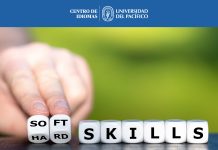Technological developments, especially in the area of communications, have sped up the globalization process that we are all witnessing today. In the business world, in particular, it seems that technology has faded away the thousands of miles that set countries apart. However, when it comes to international communication conducted in English, the unmistakable lingua franca for business, difficulties in communication persist. It becomes evident that Technology by itself then does not free us from the reality that without a good command of the language being used to interchange ideas in an international context, any attempt to communicate orally may end up as a frustrating experience.
Globalization has not only affected the way business is conducted, but also the manner in which business professionals need to be prepared to face the challenge. New skills are required from the business professional, and the skill of being communicatively competent in English is on top of the list. It pertains then to educational institutions to devise different approaches and methodologies to endow future business professionals with the capacity to communicate in English fluently and accurately.
Therefore, the question to be answered is how to improve the process to learn a foreign language. To try to find an answer in the emergence of a new method or approach would be somehow simplistic. It is however through the analysis of successful methodologies where accurate indicators of what works in any effective language program can be found. A recurring trend of effective methodologies seems to be the insertion of content in language programs, once students have reached a basic command of the foreign language. Content in this sense refers to the knowledge to be acquired in a given area such as history, science or administration, to name only a few. Nowadays there is increasing evidence that learning something new through a second or foreign language will boost the students’ competence in that language. Objectives of language programs seem to be switching from the learning of grammar or vocabulary to acquiring knowledge in an area of interest and relevance for the participants. In the case of business professionals, the focus of a language training program could be, for instance, to employ English to deepen their knowledge of marketing or accounting.
This content- based instruction model in the teaching of foreign languages has many advantages. First, students receive in English a great deal of input about a topic. This enables them to concentrate on the message rather than the form, i.e. what is being said instead of how it is being said, which is a much closer reflection of a real communication process. Second, in this natural acquisition of knowledge students develop strategies to cope with the language such as asking for clarification, confirming or restating main points to mention only a few. Finally, since the selection of the contents to be learnt is done according to the students’ interests, a high level of motivation will be sustained throughout the language program, furthering a quick acquisition of linguistic skills.
Estimated reading time: 2 minutes, 30 seconds










